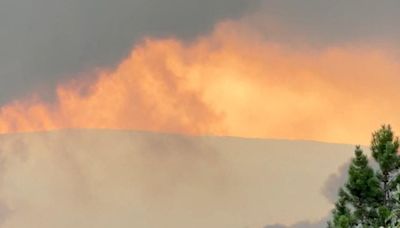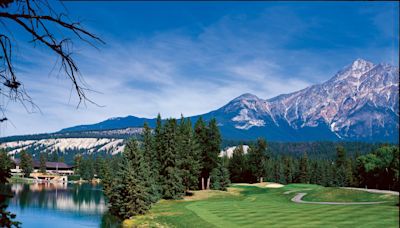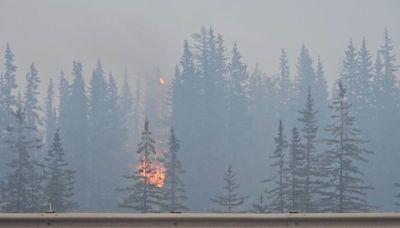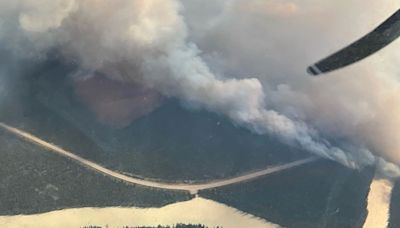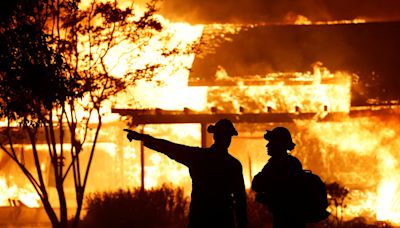Search results
Alberta is one of the thirteen provinces and territories of Canada. It is a part of Western Canada and is one of the three prairie provinces. Alberta borders British Columbia to the west, Saskatchewan to the east, the Northwest Territories to the north, and the U.S. state of Montana to the south.
- Calgary
Calgary (/ ˈ k æ l ɡ r iː / ⓘ KAL-gree) is the largest city...
- Edmonton
Edmonton (/ ˈ ɛ d m ə n t ən / ⓘ ED-mən-tən) is the capital...
- Legislative Assembly of Alberta
The Legislative Assembly of Alberta is the deliberative...
- List of Communities in Alberta
Rural and specialized municipalities, cities, towns, and...
- Coat of Arms
The coat of arms of Alberta, the heraldic symbol...
- Northwest Territories
The Northwest Territories (abbreviated NT or NWT; French:...
- Allophone
The word "allophone" (from Greek ἀλλόφωνος allóphōnos...
- Alberta's Rockies
Banff and Jasper are the main communities in the region. The...
- Flag
The flag of Alberta is an official symbol of the province of...
- Southern Alberta
Southern Alberta is a region located in the Canadian...
- Calgary
Alberta is one of the thirteen provinces and territories of Canada. Located in Western Canada , the province has an area of 661,190 km 2 (255,290 sq mi) and is bounded to the south by the United States state of Montana along 49° north for 298 km (185 mi); to the east at 110° west by the province of Saskatchewan for 1,223 km (760 mi); and at ...
- Native Groups
- Pre-Confederation
- Drive to Provincehood
- Early 20th Century
- Social Credit
- Second World War
- Postwar
- See Also
- Bibliography
- External Links
More northerly tribes, like the Woodland Cree and the Chipewyan also hunted, trapped, and fished for other types of game in the aspen parkland and boreal forestregions. Later, the mixture of these native peoples with French fur traders created a new cultural group, the Métis. The Métis established themselves to the east of Alberta, but after being ...
The first European to reach Alberta was likely a Frenchman such as Pierre La Vérendryeor one of his sons, who had travelled inland to Manitoba in 1730, establishing forts and trading furs directly with the native peoples there. Exploring the river system further, the French fur traders would have likely engaged the Blackfoot speaking people of Albe...
At the dawn of the 20th century, Alberta was simply a district of the North-West Territories, with parts of the future province being in the districts of Athabasca, Assiniboia and Saskatchewan. Local leaders lobbied hard for provincial status. The premier of the territories, Sir Frederick Haultain, was one of the most persistent and vocal supporter...
The new province of Alberta had a population of 78,000 but apart from the Canadian Pacific Railway it lacked infrastructure. The people were farmers and they lacked schools and medical facilities. Ottawa retained control of its natural resources until 1930, making economic development difficult and complicating federal-provincial relations. Indeed,...
Social Credit (often called Socred) was a populist political movement strongest in Alberta and neighboring British Columbia, 1930s-1970s. Social Credit was based on the economic theories of an Englishman, C. H. Douglas. His theories, at first brought to public attention in Alberta by UFA and Labour MPs in the early 1920s, became very popular across...
Alberta's contribution to the Canadian war effort from 1939 to 1945 was substantial. At home, prisoner of war and internment camps were maintained at Lethbridge, Medicine Hat, Wainwright and in Kananaskis Country, housing captured Axis service personnel as well as Canadian internees. A large number of British Commonwealth Air Training Plan airfield...
After the war the Manning government passed several pieces of restrictive legislation that limited labour's ability to organize workers and to call strikes. The enforcement of labour law also reflected an anti-union bias. Social Crediters, who had a penchant for conspiracy theories, believed union militancy was the product of an international Commu...
"Alberta Online Encyclopedia". Heritage Community Foundation. 2005. Archived from the original on 2014.a short encyclopediaThe Canadian Encyclopedia, Historica Canada, online edition. A very good starting pointDictionary of Canadian Biography (1966–2006) online edition. Scholarly biographies of every important person who died by 1930.Cashman, Tony (1979). A Picture History of Alberta. Edmonton: Hurtig. ISBN 978-0-8883-0157-4.scholarly articles in Alberta History1999 to presentAlberta Historical Review and Alberta Historyjournals published 1953 to presentAlberta is a province in western Canada. It is bounded by the provinces of British Columbia on the west, Saskatchewan on the east, the US state of Montana on the south and the Northwest Territories to the North. Alberta is the fourth largest Canadian province with an area of 642,317 square kilometres (248,000 sq mi). [7]
Mar 26, 2009 · Learn about Alberta, the westernmost of Canada's three Prairie provinces, with its diverse geography, people, economy and history. Find out how Alberta is named, what regions and cities it has, and what resources and challenges it faces.
People also ask
Is Alberta a landlocked province?
What is the northern part of Alberta called?
Why is Alberta called Alberta?
How big is Alberta?
Alberta is a province in western Canada. It is bounded by the provinces of British Columbia on the west, Saskatchewan on the east, the US state of Montana on the south and the Northwest Territories to the North.
